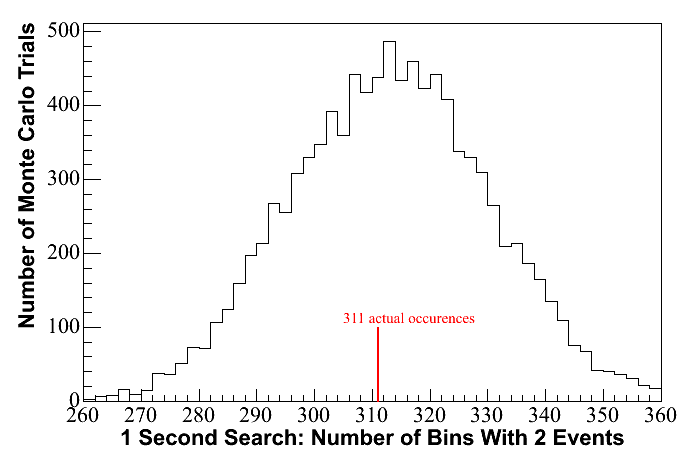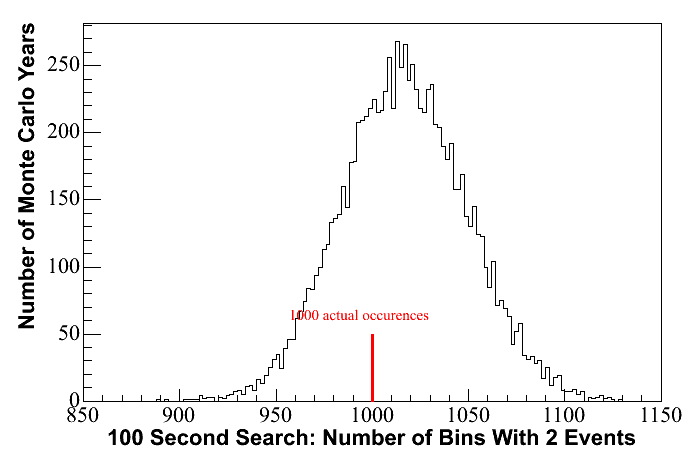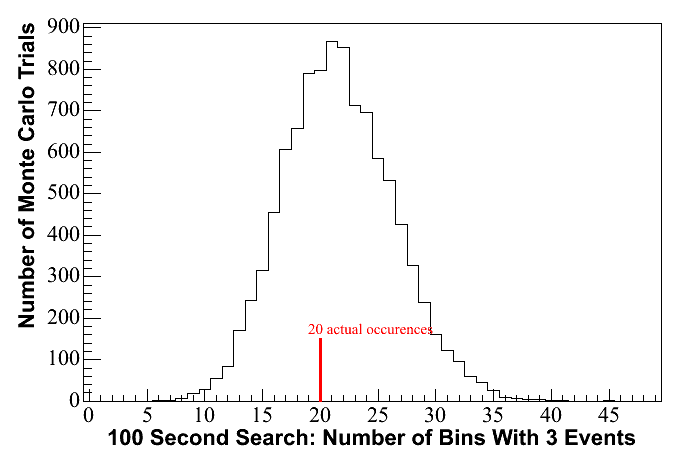No signal was found. The results of the 3 year unblinding are quite consistent with background expectations. The maximum number of events in any bin in the 1 second time window search was 2, a result that was 70.1% probable assuming only background. The maximum number of events in any bin in the 100 second search was 3, a result that was 75.3% probable assuming only background. The total number of bins with 2 or 3 events is also quite consistent with the background rate assuming Poissonian statistics.
Short Window Search: Distribution of total number of windows with 2 events in full sample determined by 10000 cycles of toy Monte Carlo. Actual results are marked in red.

Long Window Search: Distribution of total number of windows with 2 events or 3 events in full sample determined by 10000 cycles of toy Monte Carlo. Actual results are marked in red.


Menu
Overview
Motivation
Changes Between Previous Analysis and This One
File Selection/Filtering/Monte Carlo
Data Reduction
Flarechecking
Final Cut Selection
Stability Plots
Additional Tests for the Presence of a Signal
Total Probability of a False Detection